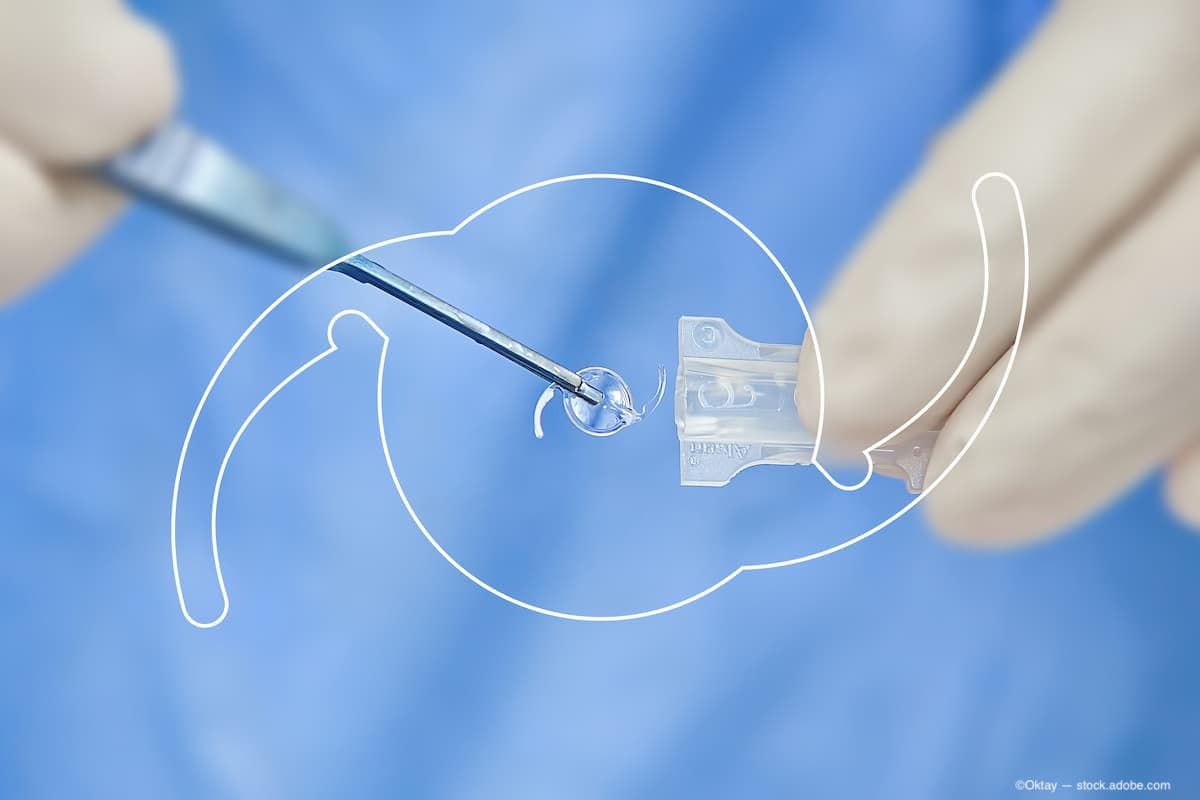Article
Dual-optic lens accommodates vision at all distances
A dual-optic accommodating IOL (Synchrony, Abbott Medical Optics) seems to have met the presbyopic challenge by providing good vision at far and intermediate distances.
Take-Home
A dual-optic accommodating IOL (Synchrony, Abbott Medical Optics) seems to have met the presbyopic challenge by providing good vision at far and intermediate distances.
By Lynda Charters; Reviewed by Matteo Piovella, MD
Monza, Italy-Maintaining high levels of near and distance vision in patients with presbyopia has always been the challenge.
A dual-optic accommodating IOL (Synchrony, Abbott Medical Optics) may have met that challenge in that it appears to be highly clinically effective, said Matteo Piovella, MD, scientific medical director, Outpatient Microsurgery Center, Monza, Italy.
Multifocal IOLs provide adequate performance for far and near distances with a 3-mm pupil, but differences can be seen with larger pupils, Dr. Piovella noted.
Using a diffractive multifocal IOL (ReSTOR, Alcon Laboratories) as an example, he explained, that with its distance-dominant design a disadvantage is near vision may be inadequate in large pupils. While the diffractive options provide adequate far and near vision, there is insufficient intermediate vision.
Though the apodized diffractive design reduces halos, a substantial percent of light is outside the range of vision for small to medium pupils, he said. For example, with a 2-mm pupil, 20% of the light is lost.
The disadvantages of diffractive multifocal IOLs, according to Dr. Piovella, are reduced contrast sensitivity by up to 30%; the diffraction grooves create different diffraction efficiency and light loss; a toric multifocal is required with 0.75 D of corneal astigmatism; halos, glare, and ghost images are difficult to manage in suspicious cases; the design provides poor intermediate distance vision; 0.50 D of spherical equivalent generates loss of one line or more of visual acuity; and the perfect target is a plano postoperative refractive results.
In contrast, with accommodative IOLs there is no loss of light with small and large pupils, so the quality of vision is not compromised and no light is lost at any level of vision. With the ReSTOR and Tecnis multifocal IOLs, with a 5-mm pupil, 84% and 41% of light, respectively, can be lost at near.
Finally, accommodative IOLs are equivalent to monofocal IOLs for halos and glare and make 100% of the light available for vision without any percentage of light lost.
About the lens technology
The Synchrony accommodating IOL is a 9.5- × 9.8-mm, single-piece, dual-optic silicone IOL. It has a three-dimensional lens designed to fill the capsular bag, 5.5-mm high-plus anterior optic (+32 D), and a 6-mm variable negative posterior optic-optics that are connected by spring haptics.
During implantation, 5.3-mm capsulorhexis was created in all cases. The anterior and posterior capsules were cleaned and the incision was enlarged with a calibrated metal knife at 3.75 mm. The IOL was delivered using an injector.
The first optic was released and the capsular bag was opened by pushing the leading optic against the posterior capsule.
The second optic was then delivered into the capsular bag. Following implantation, the patients were followed on the same day, day 1, week 1, and months 1, 3, 6, 12 and 18 months.
The clinical results in 32 eyes (17 patients; mean age, 71.43 ± 7.13 years) 18 months after implantation showed that the mean uncorrected visual acuity was 0.94 and the mean best-corrected visual acuity was 0.93, Dr. Piovella noted.
No discomfort or complications were noted postoperatively. Defocus curve analysis was applied to detect mean accommodative range. No contrast sensitivity penalization occurred. The quality of vision study detected moderate halos in only 14.3% of the patients.
Advancing technology
A new generation of the lens (Synchrony VU Accommodating IOL) is designed to provide enhanced near vision without compromising quality of vision. The IOL has a central blended aspheric zone designed to extend the depth of focus. The lens is CE Mark approved.
Dr. Piovella said he believes accommodating IOLs are superior to diffractive multifocal IOLs for quality of the vision. He enumerated the advantages: no contrast sensitivity penalization, the halos and glare are similar to monofocal IOLs.
In addition he pointed out that the accommodating IOLs are best choice for suspicious patient, with possible high sensitivity to glare and halos, but highly demanding for new technology IOLs, and they provide intermediate vision.
“The Synchrony dual-optic accommodating IOL appears to be clinically effective,” Dr. Piovella said. “The uncorrected far vision that is safe for driving was achieved within 1 month after implantation. The intermediate and near vision were comfortable within 1 week postoperatively.”
Without contrast sensitivity penalization and diffractions, this allows IOL implantation in patients with possible high sensitivity to glare and halos, he concluded.
All patients are provided with temporary glasses +1 D for reading small print under soft light.
Matteo Piovella, MD
Dr. Piovella is a consultant to Abbott Medical Optics for this technology. The Synchrony lens is not available in the United States.
Newsletter
Don’t miss out—get Ophthalmology Times updates on the latest clinical advancements and expert interviews, straight to your inbox.





